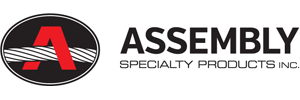OSHA Guide – Cranes and Derricks in Construction
MENU
- Introduction
- Employer Responsibilities
- Section 1400 – Scope
- Section 1401 – Definitions
- Section 1402 – Ground Conditions
- Sections 1403-1406 – Assembly and Disassembly
- Sections 1407-1411 – Power Lines
- Section 1412 – Inspections (with Section 1435(f)-Tower Crane Inspections) and Section 1436(p)-Derricks Inspections)
- Section 1413 – Wire Rope Inspection
- Section 1414 – Wire Rope – Selection and Installation Criteria
- Sections 1415 Safety Devices & 1416 Operational Aids
- Section 1417 – Operation
- Section 1418 – Authority to Stop Operation
- Section 1419-1422 – Signals
- Section 1423 – Fall Protection
- Section 1424 – Work Area Control
- Section 1425 – Keeping Clear of the Load
- Section 1426 – Free Fall and Controlled Load Lowering
- Section 1427 – Operator Qualification and Certification
- Section 1428 – Signal Person Qualifications
- Section 1429 – Qualifications of Maintenance & Repair Employees
- Section 1430 – Training
- Section 1431 – Hoisting Personnel
- Section 1432 – Multiple-Crane/Derrick Lifts
- Section 1433 – Design, Construction and Testing
- Section 1434 – Equipment Modifications
- Section 1435 – Tower Cranes
- Section 1436 – Derricks
- Section 1437 – Floating Cranes/Derricks and Land Cranes/Derricks on Barges
- Section 1438 – Overhead & Gantry Cranes
- Section 1439 – Dedicated Pile Drivers
- Section 1440 – Sideboom Cranes
- Section 1441 – Equipment with a Rated Hoisting/Lifting Capacity of 2,000 Pounds or Less
- Directory of States with Approved Occupational Safety and Health Programs
- Workers’ Rights
- OSHA Assistance, Services and Programs
- OSHA Regional Offices
- NIOSH Health Hazard Evaluation Program
Sections 1403-1406 – Assembly and Disassembly
Accidents during assembly and disassembly of lattice boom and tower cranes are one of the major causes of crane-related fatalities. These sections are designed to prevent such accidents by requiring safe assembly/disassembly procedures for lattice boom and tower cranes. Hydraulic-boom cranes are not generally assembled on site, but these sections contain some provisions, such as the requirement for proper setting of outriggers and stabilizers, that apply to cranes with hydraulic booms.
Required Procedures
When assembling or disassembling a crane, you must comply with either:
- Manufacturer procedures, or
- Your own employer procedures, which must be developed by a qualified person. Such procedures must, at a minimum (1) prevent unintended dangerous movement or collapse of any part of the equipment; (2) provide adequate support and stability of all parts of the equipment; and (3) position employees involved in the assembly/disassembly operation so that their exposure to unintended movement or collapse of part or all of the equipment is minimized.
Regardless of which of these options you choose, you must follow any manufacturer prohibitions that apply to the assembly/disassembly operation.
The A/D Director
All assembly/disassembly operations must be directed by an individual who meets the criteria for both a competent person and a qualified person, or by a competent person who is assisted by one or more qualified persons. The A/D director must understand the applicable assembly/ disassembly procedures. The A/D director must take the following precautions to protect against potential hazards associated with the operation, including:
- Site and ground conditions must be able to support the equipment during assembly/disassembly
- Blocking material must be the correct size, amount, and condition. The blocking must be stacked so as to sustain the loads and maintain stability
- When used to support lattice booms or components, blocking must be placed appropriately to protect the structural integrity of the equipment, and prevent dangerous movement and collapse
- When using an assist crane, the loads that will be imposed on the assist crane at each phase of assembly/disassembly must be verified as being within its rated capacity
- The point(s) of attachment of rigging to a boom (or boom sections, jib, or jib sections) must be suitable for preventing structural damage and facilitating safe handling of these components
- The center of gravity of the load must be identified if necessary for the method used for maintaining stability. Where there is insufficient information to accurately identify the center of gravity, measures designed to prevent unintended dangerous movement resulting from an inaccurate identification of the center of gravity must be used
- The boom sections, boom suspension systems (such as gantry A-frames and jib struts), and components must be rigged or supported to maintain stability upon the removal of the pins
- Suspension ropes and pendants must not be allowed to catch on the boom or jib connection pins or cotter pins (including keepers and locking pins)
- Steps must be taken to prevent unintended movement from counterweights that are inadequately supported or are being hoisted
- Each time reliance is to be placed on the boom hoist brake to prevent boom movement during assembly/disassembly, the brake must be tested prior to such reliance to determine if it is sufficient to prevent boom movement. If it is not sufficient, a boom hoist pawl, other locking device/back-up braking device, or another method of preventing dangerous movement of the boom (such as blocking or using an assist crane) from a boom hoist brake failure must be used
- Backward stability must be assured before swinging the upperworks, travel, and when attaching or removing equipment components
- The effect of wind speed and weather on the equipment must be taken into account
The Crew
Before the operation begins, the A/D director must ensure that the crew members understand all of the following:
- Their tasks
- The hazards associated with their tasks
- The hazardous positions/locations that they need to avoid
Before a crew member goes to a location that is out of view of the operator and is either in, on, or under the equipment, or near the equipment (or load) where the crew member could be injured by movement of the equipment (or load), the crew member must inform the operator that he/she is going to that location. Whenever the operator knows that a crew member is in such a potentially dangerous position, the operator must not move any part of the equipment (or load) until the operator is informed in accord with a prearranged system of communication that the crew member is in a safe position.
The Rigger
When rigging is used for assembly/ disassembly, the employer must ensure that the rigging work is done by a qualified rigger, i.e., a rigger who meets the definition of a qualified person.
Working Under the Boom, Jib or Other Components
When pins (or similar devices) are being removed, employees must not be under the boom, jib, or other components, unless site constraints require one or more employees to be in such a position. In such a case, the A/D director must implement procedures that minimize the risk of unintended dangerous movement and minimize the duration and extent of exposure under the boom.
Synthetic Slings
When using synthetic slings during assembly or disassembly, you must follow the synthetic sling manufacturer’s instructions, limitations, specifications and recommendations. Synthetic slings must be protected from abrasive, sharp or acute edges, and configurations that could cause a reduction of the sling’s rated capacity, such as distortion or localized compression.
Outriggers and Stabilizers
When the load to be handled and the operating radius require the use of outriggers or stabilizers, or at any time when outriggers or stabilizers are used:
- The outriggers or stabilizers must be either fully extended or, if manufacturer procedures permit, deployed as specified in the load chart
- The outriggers must be set to remove the equipment weight from the wheels, except for locomotive cranes. This provision does not apply to stabilizers
- When outrigger floats are used, they must be attached to the outriggers. When stabilizer floats are used, they must be attached to the stabilizers
- Each outrigger or stabilizer must be visible to the operator or to a signal person during extension and setting
- Outrigger and stabilizer blocking must be the correct size, amount, and condition. The blocking must be placed only under the outrigger or stabilizer float/pad of the jack or, where the outrigger or stabilizer is designed without a jack, under the outer bearing surface of the extended outrigger or stabilizer beam
Dismantling Booms and Jibs
The following precautions must be taken to prevent dangerous movement of boom and jib sections that are being dismantled.
- None of the pins in the pendants are to be removed (partly or completely) when the pendants are in tension
- None of the pins (top or bottom) on boom sections located between the pendant attachment points and the crane/derrick body are to be removed (partly or completely) when the pendants are in tension
- None of the pins (top or bottom) on boom sections located between the uppermost boom section and the crane/derrick body are to be removed (partly or completely) when the boom is being supported by the uppermost boom section resting on the ground (or other support)
- None of the top pins on boom sections located on the cantilevered portion of the boom being removed (the portion being removed ahead of the pendant attachment points) are to be removed (partly or completely) until the cantilevered section to be removed is fully supported
Fall Protection
During assembly/disassembly work, fall protection is generally required when a worker is more than 15 feet above an unprotected side or edge. See section 1423.

